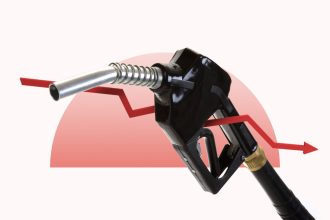Key takeaways
- Multiple programs offer debt relief for federal student loans.
- Student loan cancellation, discharge and forgiveness vary based on requirements and loan types.
- Debt relief alternatives include refinancing or negotiation, but that might not help with federal loans.
If you’ve accumulated federal student loan debt to finance your college or university education, you may be able to take steps to reduce or eliminate what you owe. The first steps to relief are to know who qualifies for student loan forgiveness, what programs exist and how to apply.
What is student loan relief?
Student loan relief, or student debt relief, is the umbrella term that covers myriad solutions to help reduce or eliminate what you owe on your federal student loans. Relief options fall into multiple categories based on eligibility, what loans are covered and other factors.
Types of loans that qualify for student loan debt relief
There are only certain types of student loans that qualify for debt relief. First, they must be federal student loans. Private student loans typically do not offer this benefit.
- Federal direct loans are eligible, including subsidized, unsubsidized, PLUS loans for students and direct consolidation loans
- The Federal Family Education Loan (FFEEL)
- Perkins Loans
- Direct consolidation loans
- Parent PLUS loans, for certain situations
Any loans in default are not eligible for student loan debt relief. You must get current on your payments or consolidate your loans to become eligible again.
Not all loans offer the same debt relief. Depending on your loan, you may be eligible for different programs.
Types of student loan relief
| Cancellation | Forgiveness | Discharge | Deferment/Forbearance | |
|---|---|---|---|---|
| Loan relief description | Eliminates repayments due to job | Forgives loan under certain situations/jobs | Eliminates repayments due to extenuating circumstances | Temporarily pauses required student loan payments |
| Qualifications | Work in the nonprofit or public sector for qualifying employer Make payments for a specific time period | Work in the nonprofit or public sector for qualifying employer Make payments for a specific time period | School attended has closed School engaged in fraudulent practices Borrower is disabled or died Borrower entered bankruptcy | Proof of financial difficulties or illness that might prevent timely repayments |
| Programs | Perkins Loan Cancellation | Public Service Loan Forgiveness Teacher Loan Income Repayment Forgiveness Loan | Closed-school discharge Total and permanent disability discharge Death discharge Borrower Defense to Repayment | Economic hardship Unemployment deferment Cancer treatment deferment Military service/post active-duty deferment |
| How to Apply | Through loan servicer or school issuing loan | Through U.S. Department of Education | Through U.S. Department of Education | Through federal student loan servicer |
Student loan cancellation
As the term indicates, student loan cancellation means the remainder of the student debt you owe goes away. More often than not, cancellation is used with a process involving the Perkins Loan Program.
The Perkins Program issued loans to students in financial need and was discontinued in 2017. However, if you took out this type of loan and work in a qualifying government or nonprofit job for a time, you could cancel the remainder of that debt.
Jobs that might qualify for Perkins Loan Program cancellations include:
- First responders
- Healthcare workers
- Teachers
- Volunteer programs (AmeriCorps or Peace Corps)
To determine eligibility for a Perkins Loan cancellation, contact the school that issued the loan or that school’s loan servicer.
Student loan forgiveness
Student loan forgiveness means your loan might go away under certain conditions.
Public Service loan Forgiveness
One of the more common types of debt relief in this category is the Public Service Loan Forgiveness (PSLF) program. Under PSLF parameters, your qualifying federal Direct Loans could be forgiven if you’ve:
- Made 120 qualifying loan payments (generally 10 years) and
- Work or have worked in public service roles like state or federal government jobs, the military or select nonprofit organizations
The U.S. Department of Education offers a PSLF Help Tool to help you find out if you’re eligible.
Other loan forgiveness options include:
- Medical school forgiveness programs
- Military loan forgiveness
- Nurse Corps loan repayment program
- Teacher loan forgiveness
Income-based repayment plan
The income-based repayment plan (IBR) is currently the only income-driven repayment plan to offer forgiveness at the end of a borrower’s repayment term. If there is any remaining balance after 20 or 25 years of repayment, the government will forgive it under this plan.
Student loan discharge
Student loan discharge is similar to student loan cancellation in reducing or eliminating what you owe. A student loan discharge might be granted if you’re unable to pay your loan because of circumstances outside your control.
These might include:
- Borrower defense. If you enrolled in a school based on misleading or false information or one that engaged in misconduct, you could find relief through the borrower defense loan discharge.
- Disability discharge. The total and permanent disability discharge offers relief for those whose physical or mental disability prevents them from working to be able to afford student loan payments.
- Discharge due to bankruptcy. You may be able to have your student loans discharged through bankruptcy if you can prove they cause undue hardship.
- Discharge due to death. If the student who holds the loan passes away — or a parent or student whose education is financed through a parent PLUS loan dies — the loan is discharged due to death.
- School closure. If your school closed while you were enrolled or within 180 days of approved withdrawal, you may qualify under the closed school discharge.
Loan deferment and forbearance
When you apply for a deferment or forbearance through your federal loan servicer, your loan doesn’t go away. Instead, you’re pushing the “pause” button on what you owe. This debt relief method is generally used if you’re experiencing financial hardships or illness that might prevent you from making timely payments on what you owe.
Types of deferment or forbearance programs include:
- Cancer treatment deferment
- Economic hardship
- In-school deferment
- Military service and post-active duty service deferment
- Parent PLUS borrower deferment
- Student loan debt forbearance
- Unemployment deferment
“Deferment” and “forbearance” are also frequently interchangeable, but they aren’t the same in the following ways:
| Deferment | Forbearance | |
| Eligibilty | Specific eligibility requirements | Up to loan servicer’s discretion |
| Interest accrual | Some types of deferment eliminate interest | Interest continues to accrue during forbearance period |
| Length of time | Can span years | Lasts up to 12 months at a time |
What to consider when looking for student loan relief
Applying for student loan relief doesn’t mean that you can stop payment. Doing so could cause more problems, such as a damaged credit score. Continue those payments while your application is being reviewed.
Also, be wary of student loan scams. Plenty of debt relief companies are reputable. Others, not so much. Look out for red flags like:
- Asking you to sign a power of attorney
- Promising instant loan forgiveness
- Requesting your FSA ID password
- Requiring an upfront payment before doing any work
- Showing fake Department of Education credentials
If you encounter any of these red flags, do not engage. Instead, report suspected scam operations to your student loan servicer, the Federal Trade Commission or your state’s attorney general.
Where debt relief currently stands
During its tenure, the Biden-Harris Administration forgave over $175 billion in student loan debt for nearly five million borrowers by improving existing programs. The administration also introduced the Saving on a Valuable Education (SAVE) plan, an income-driven repayment plan that increased the income exemption from 150 percent to 225 percent of the poverty line and helped prevent balances from growing due to unpaid interest.
The SAVE plan very quickly faced legal challenges and is currently tied up in litigation. It remains in the courts today, even as a new administration steps in.
Student loan forgiveness under the Trump administration doesn’t look promising. Recent executive orders have threatened the existence of the Department of Education and challenged eligibility requirements for PSLF. In March 2025, a federal court blocked the SAVE plan and likely put an end to the program.
The same court ruling also ordered the end of forgiveness under Income-Contingent Repayment (ICR) and Pay As You Earn (PAYE). Right now, the only IDR plan offering forgiveness at the end of the term is the Income-Based Repayment plan. Applications for all IDR plans are live, but the processing of these applications is paused at this time.
For the latest information about the administration’s plans and announcements (and to see if you qualify for existing programs), visit the Federal Student Aid website.
Other options for student debt relief
For those who don’t qualify for any federal relief programs, there are other options that may help you afford your payments.
- Deferment or forbearance. Similar to federal loans, deferment or forbearance temporarily halts your payments on your private student loan. However, interest doesn’t stop accruing under forbearance arrangements. Neither of these is a long-term solution, as you could pay more when the forbearance or deferment period ends.
- Refinance. If you have good credit or a trusted cosigner, refinancing your student loans could help you consolidate multiple student loans at a lower interest rate. However, you could lose federal student loan benefits or protections since you’ll refinance them into a private student loan. Federal loan rates are also often lower than private loan rates.
- Talk to your lender. If you’re struggling to repay a private loan or need assistance, contact your loan servicer. The lender can often offer viable solutions that might be helpful, including temporarily lowering your loan payments or shifting your loan to an interest-only payment plan.
Bottom line
While the student debt you owe might seem insurmountable, solutions are available to reduce or eliminate what you need to pay. Depending on your loan, profession and other requirements, you could qualify for specific debt relief programs.
Start with researching your options or contact your loan service provider. Research your loan type and employment situation. With this information in hand, you could be on your way to finding relief for your student debt.
Read the full article here














